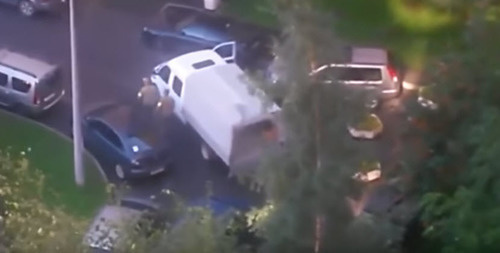
Kabardino-Balkarian Jamaat Suffers Serious Losses in Fight With Government Forces
Publication: Eurasia Daily Monitor Volume: 13 Issue: 149
By:

Starting in 2014, the jamaats of the armed Islamist underground movement in the North Caucasus began, one by one, to pledge allegiance to the so-called Islamic State (IS). Kabardino-Balkarian insurgents split into those who became part of the Islamic State and those who remained loyal to the Caucasus Emirate. Robert Zankishiev (a.k.a. amir Abdullah) led the group associated with the IS, while Zalim Shebzukhov (a.k.a. amir Salim) was the head of the group associated with the Caucasus Emirate. In November 2015, the Russian government’s security forces killed amir Abdullah in Nalchik during a special operation (see EDM, December 3, 2015). Since then, no one has claimed leadership of the Kabardino-Balkarian IS camp.
Amir Salim remained connected with the insurgent group supporting the resurrection of the Caucasus Emirate (Graniru.org, January 4). Zalim Shebzukhov is a classic example of an individual being inadvertently radicalized by unmotivated pressure from government authorities. Shebzukhov spent two and a half years behind bars after he was arrested on December 7, 2007. On June 24, 2009, the jury and the Supreme Court of Kabardino-Balkaria acquitted Shebzukhov “due to the absence of evidence of a crime” and decreed that he should be released in the court room (Onkavkaz.com, August 18). Following his discharge, however, Shebzukhov joined the insurgency, according to the police (Caucasreview.com, January 21). Shebzukhov was put on the Russian federal wanted list for multiple incidents of armed attacks and killings. On April 16, 2015, the Russian National Anti-Terrorist Committee (NAK) announced that the security services killed amir Salim during a special operation in Nalchik, but that report later turned out to be false.
Special operations against members of the insurgency have been quite routine in Kabardino-Balkaria. However, the most surprising news has come from St. Petersburg, as the police launched a special operation against Kabardino-Balkarian rebels in Russia’s “northern capital,” which is 3,000 kilometers away from the republic. On August 17, the Federal Security Service (FSB) of Russia told the media that government forces started a special operation against the North Caucasus rebels in an apartment block located at 92/3 Leninsky Prospect, in St. Petersburg (Fontanka.ru, August 17). According to the FSB’s department in the city, Kabardino-Balkarian authorities tipped them off about the rebels’ whereabouts. Most likely, the police monitored the rebels’ transit to St. Petersburg or was even prompted specifically to intercept and kill them. The security services killed four people in the apartment in St. Petersburg and announced all of them to be members of the Islamist underground movement of Kabardino-Balkaria. Thirty-year-old amir Salim (Zelim Shebzukhov) unexpectedly turned out to be among the killed suspects. Other killed individuals included Astemir Sheriev (25), who was the leader of the Northern Sector of the Caucasus Emirate’s Velayat Kabardino-Balkaria and Karachay; ethnic Russian Vyacheslav Nyrov (34), who led the Northwestern Sector of rebels in Kabardino-Balkaria; as well as Aslan Kurashinov (39) (Kavkazsky Uzel, August 17).
The main reason for why observers paid attention to the special operation in St. Petersburg was that amir Salim was killed there. Why did the leader of Kabardino-Balkarian rebels travel so far north? It is unlikely that he tried to leave the country, because the central authorities are more vigilant in and around Moscow than in the North Caucasus. If he wanted to escape the country, he would have kept away from Moscow and St. Petersburg. If amir Salim was attempting to organize a terrorist attack there, it is unclear why he participated in it himself instead of dispatching his subordinates. It is plausible that amir Salim had plans to follow the example of his idol, the late Chechen militant Shamil Basaev (d. 2006), and take hostages in the city. Russian experts think that the story of amir Salim indicates that the North Caucasus rebels are spreading across Russia (Kavkazsky Uzel, August 18).
The troubles of the Kabardino-Balkarian jamaat did not end there. According to the authorities, government forces killed two insurgents on August 27, during a special operation near the village of Nartan. The killed rebels were identified as Alim Bitokov and Ibragim Gugov (Kavkazsky Uzel, August 27).
Indeed, August 2016 was quite volatile in Kabardino-Balkaria. At about 1 AM, on August 14, a police patrol on the Kavkaz federal highway shot and killed 25-year-old Khizir Likhov after he made an attempt on the lives of the police officers. The suspect was put on the Russian federal wanted list in October 2014. Twice, in 2015 and 2016, the police mistakenly declared that Likhov was dead (Gazeta.ru, August 14).
On September 3, speaking at a public event dedicated to the solidarity with people who combat terrorism, the deputy minister of the Ministry of Interior of Kabardino-Balkaria, Kazbek Tatuev, said that the authorities are looking for 34 people in connection with terrorist activities in the republic. Apparently, the official did not count the one hundred people from the republic who are fighting in Syria. Tatuev made a bold statement that “on the territory of Kabardino-Balkaria, currently there are no members of the underground bandit movement” (Kavkazsky Uzel, September 2). This statement is exceedingly difficult to verify. Time will tell if the “unregistered” rebels will launch attacks. The structure of the rebel jamaats does not require formal membership. They are highly flexible organizations. Their flexibility allows them to replace the killed rebels with their helpers, who maintain ties to the militants by supplying food, supplies and ammunition for them. Hence, the death of leaders rarely results in the end of jamaats. On the contrary, decapitated jamaats routinely regroup and return to their activities.
The leadership of the jamaat of Kabardino-Balkaria and Karachay has been decimated as its leaders, including the sectoral commanders, have been killed. But in the nearest future, the remaining members of the jamaat will be regrouping and restoring the linkages within the organization normally only accessible to its top commanders.




